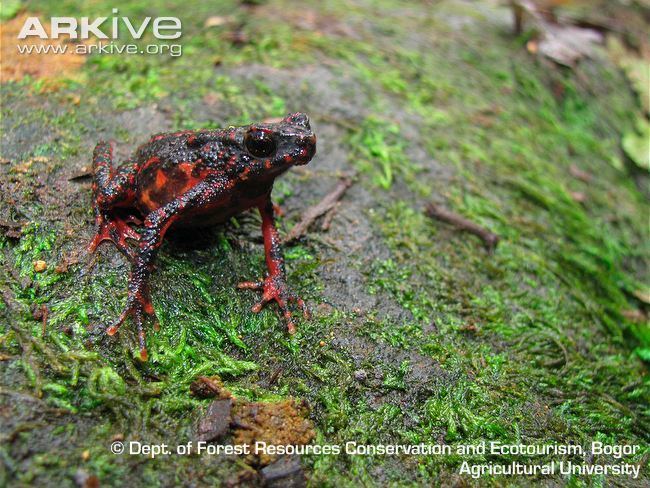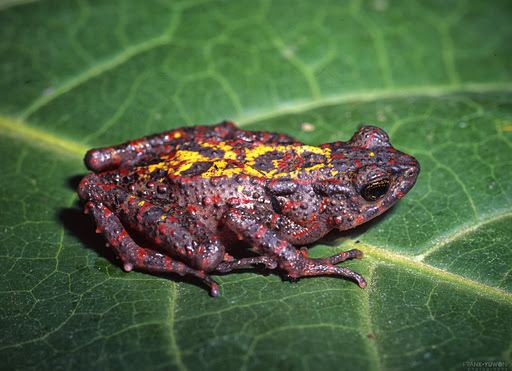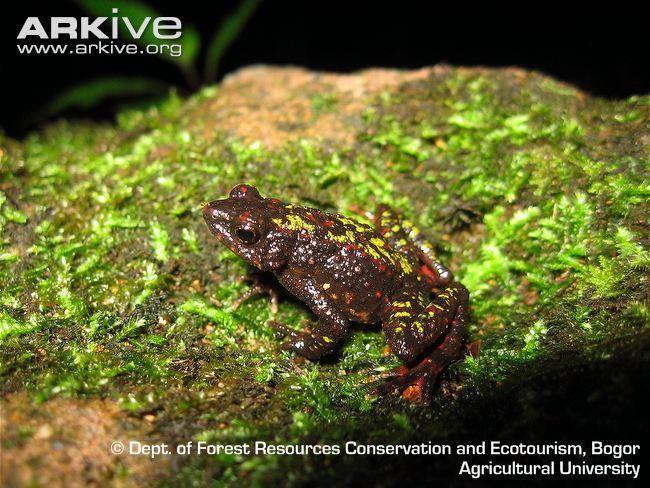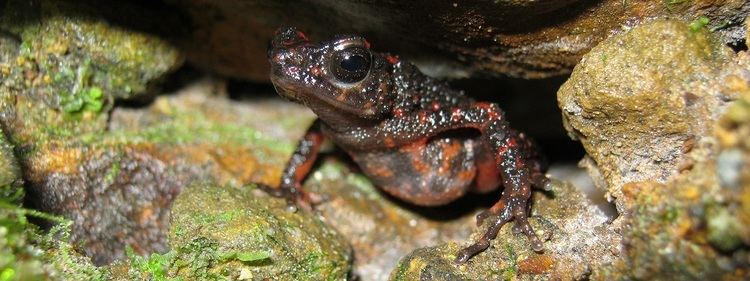Order Anura Higher classification Leptophryne | Phylum Chordata Family Bufonidae Scientific name Leptophryne cruentata Rank Species | |
 | ||
Similar Frog, Amphibians, Sumatran ground cuckoo, Javan torrent frog, Flores hawk‑eagle | ||
Bleeding toad leptophryne cruentata trying to eat a caterpillar in natural habitat
The Bleeding toad or the fire toad (Leptophryne cruentata) is a species of true toad endemic to Java, Indonesia. It is listed as a critically endangered species due to a drastic population decline, caused in part by habitat loss due to global climate change and the eruption of Mount Galunggung in 1987. Chytridiomycosis has been identified as a possible threat, but no positive identification has been made. It is possible that the chemical cocktail secreted by the toads provides them with some resistance to the fungus.
Contents
- Bleeding toad leptophryne cruentata trying to eat a caterpillar in natural habitat
- Description
- Distribution
- Threats
- Skin Secretions
- References

Description

Bleeding toads are medium sized toads that have dark red/purple bodies with blood-red to yellow marbling present on the back and legs. They resemble other toads in the Bufonidae family with several distinctions. They have reduced Bidder's organs, and partially fused pectoral epicoracoid cartilage. In addition, they have a slender habitus and elongate limbs. They received the common name "bleeding toad" due to the red back markings and the skin secretions they produce when stressed.
Distribution

The narrow geographic range of the toads may be partially responsible for the decline in population numbers. They are endemic to Mount Pangrango and Mount Gedeh located in the Gunung Gede Pangrango National Park in Indonesia. They prefer to inhabit the boundary zones between the moist lowland areas and mountainous forests, typically found between altitudes of 1000m and 2000m. They breed and lay their eggs in slow moving, vernal streams in which the larvae develop.
Threats

Bleeding toads are listed as critically endangered by the IUCN, due to a population decline of more than 80% in the past 10 years. It is believed that the eruption of Mount Galunggung in 1987 is responsible for a significant portion of this decline due to the loss and degradation of habitat. Chytridiomycosis has been identified as a possible source of population decline, as the observed patterns of decline resemble declines of other mountainous stream-breeding amphibians that have been affected by the fungus, but no positive identification of the disease on a bleeding toad has been made.

The effects of global climate change may also contribute to the decline of the species. As temperatures rise, the range of suitable habitat for many mountainous species is moved to higher elevations. The result of this is a smaller total amount of suitable habitat, that can support smaller populations. Additionally, these populations are often isolated, which can leave them vulnerable to events such as the eruption of Mount Galungung.
Skin Secretions

Much interest has been generated by the chemical cocktail that is secreted by bleeding toads when stressed. The secretions have been shown to exhibit both antifungal and antibacterial properties. This skin secretion may be the reason that chytridiomycosis has not had a major effect on the toads; the antifungal properties may give the toads a resistance to the fungus. Researchers have shown interest in finding ways of isolating the antibacterial/antifungal components of the secretion and mass producing them as novel medicines.
